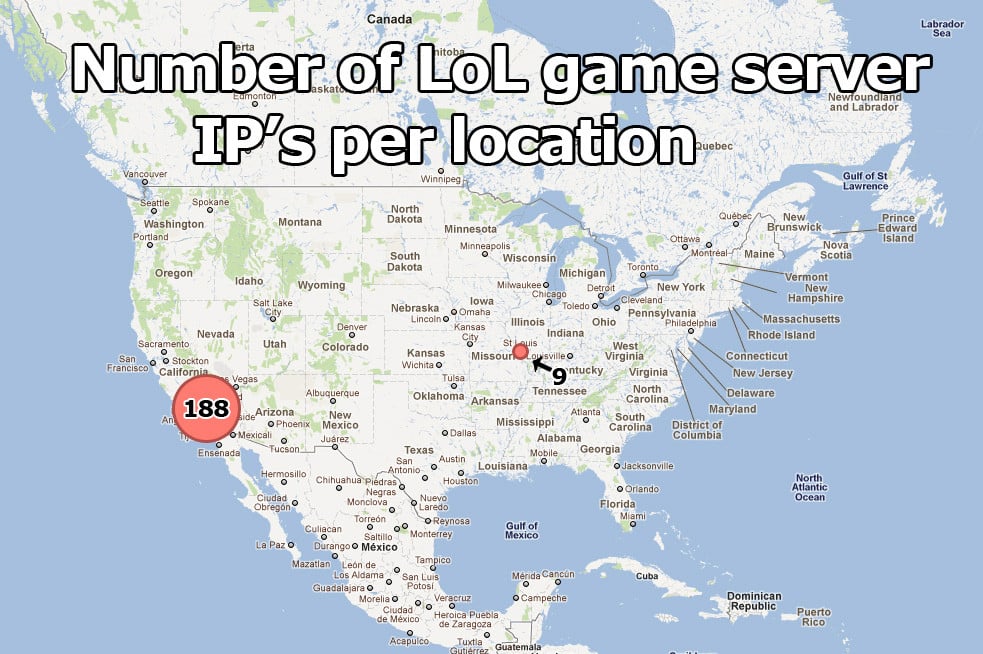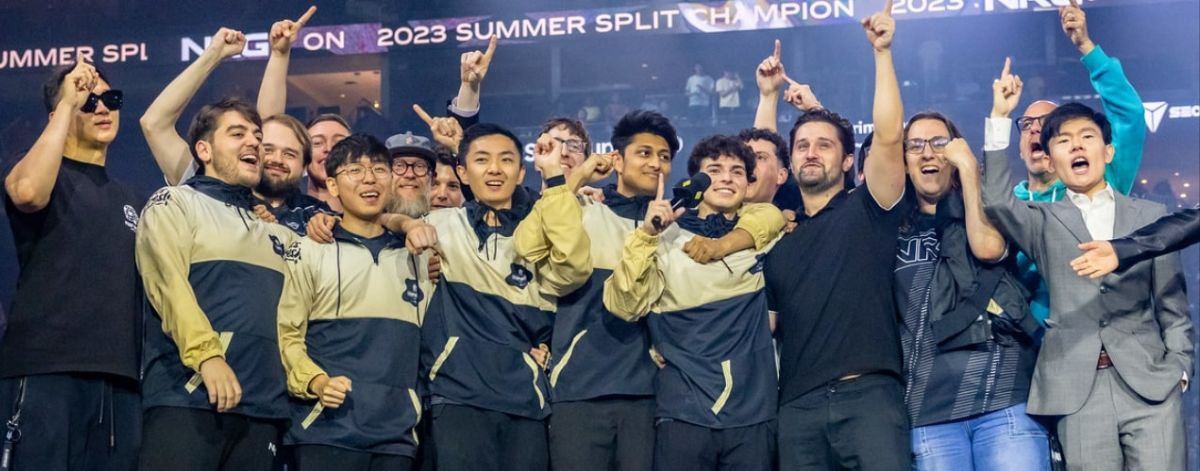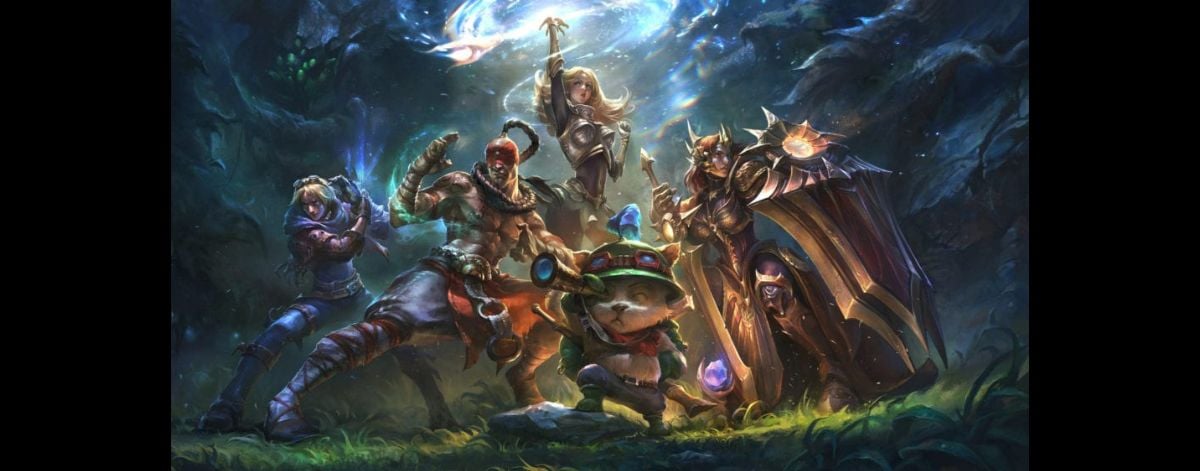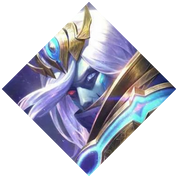
League of Legends, after a decade and a half since its release, is still an ever-growing juggernaut in the realm of MOBAs and gaming in general. And with a sizeable chunk of League’s 140 million monthly players, North America (NA) stands as a hub for the game’s community by hosting the biggest streamers and content creators, as well as comprising the Headquarters of Riot Games itself.
Let’s delve into the intricacies of this server, answering some of the more frequent questions surrounding it and exploring its player demographics, historical evolution, distinct playstyle, and professional league dynamics as we shed some light on its significance within the League of Legends community.
With over 28 million monthly players, NA is undoubtedly a pillar of League of Legends’ popularity, especially in the West, ranking third behind EUW and China’s network of 27 servers.
By hosting four League of Legends World Championships in the region and boasting a significant following of the League Championship Series LCS with over 26 million hours watched throughout the league streams, the server proves itself as a fiercely competitive battleground and esports powerhouse whose fame and status have a far-reaching effect on the global League community.
NA, just as its name suggests, hosts a player base from North American countries, primarily from the United States and Canada.
Unlike Europe where the continent is split among 2 servers, NA holds reign over the continent with no other alternative for the players, except the states of Hawaii and Alaska who experience better ping on the Japan server **due to being geographically closer than the Chicago datacenter. It is not unlikely to encounter players from Mexico or Cuba either in your NA games.
The League of Legends NA (and PBE) server is currently located in Chicago, Illinois, United States with IP 104.160.131.3
NA was one of the two OG League of Legends servers, along with Europe, that kickstarted the multiplayer game as we know it on October 27th, 2009.
The server wasn’t centralized in one data center as we know it today, in fact, it was split among 197 distinct IPs, 188 in California and 9 in Missouri which, coupled with horrible ISP routing for online videogames at the time, made high ping an underlying issue plaguing NA since its conception as it wasn’t unusual for US and Canadian players to constantly play on +100 ping (still isn’t lol) so the community desperately requested a more centralized, powerful and unified NA server. **(Source)

All this backlash culminated in Riot finally publicizing a roadmap in 2015 that aims to improve the network experience on the server, starting with the upgrade of outdated network equipment that struggles to keep up with the ever-growing player base.
They then created an Internet Superhighway by working with American and Canadian ISPs to make more direct routing protocols specifically tailored to handle League traffic efficiently. Finally, they decided to migrate the atomized NA IPs into a centralized server residing in a Chicago data center, which was chosen due to being the fairest spot, stationed the closest to the east and west coast and Canada equally.
While these changes tremendously optimized the experience on the server, it’s still a far cry from being a perfect solution as parts of the US, mainly on the East Coast, can’t achieve competitive sub-50 ping which greatly undermines NA’s competitiveness face to other regions like Korea and EUW.
The NA community is still demanding better coverage with additional servers on the East and West coast. While this seems optimal on the surface, it would fracture the already sparse NA player base into small barren servers with egregious queue times and and even poorer experience. Nobody wants another EUNE.
Riot also proved once that NA is almost a large PBE server since, at the start of season 9, it rolled out Positional Ranks; one of the most controversial additions to the game, releasing it exclusively on NA and Korea as some sort of public test*.* For those unfamiliar with this system, it essentially replaces your normal rank in Ranked Solo Duo for example with a separate rank for every distinct role. So you could be Diamond 2 in solo midlane but be a Silver 4 ADC, and guess what in what rank you’ll play if you get auto-filled? Doesn’t that sound very fun? Everyone thought so as well and the change was thankfully reverted after 2 months of chaos plaguing the NA ladder.
Aside from arguably having the most toxic player base in the game, NA players are also the most self-centered as they’re most likely to play for themselves, neglecting teamplay and ultimately attempting to 1v9 every game. That’s why NA playstyle is usually less micro-intensive and more pick and macro-oriented, prioritizing ARAMing waiting for a cheesy team fight instead of properly strategizing to snowball leads and punish enemy mistakes.
The region’s esports scene however is more interesting in terms of playstyle as it features the largest number of imported pro players. As a result, NA teams’ strategies are pretty diverse when they get on the world stage and they start thinking collectively by utilizing split-pushing and… grouping mid still. Some things never change I guess.

The League Championship Series commonly known as the LCS (previously labeled as the NA LCS) is one of 8 official League of Legends esports leagues. It serves as the battleground where North American teams vie to compete and secure their positions in international tournaments such as MSI and Worlds.
Just like most League of Legends esports Leagues, the LCS’s format seems a bit complicated at first glance, so let’s briefly dissect how it functions:
The 2024 LCS season begins on January 20th and is divided into two splits; Spring and Summer, culminating in the LCS Playoffs, where teams compete to secure a spot in the 2024 Worlds.
During the Spring Split, eight American and Canadian teams clash in a best-of-one double round-robin style tournament in the regular season ( a sort of “group stage” where each team faces every other one twice and the winner is concluded in a single match ). The top 6 performing teams then compete in a best-of-five double-elimination playoff to conclude the split winner, who will auto-qualify, along with the runner-up, to the Mid-season Invitational.
The Summer Split however underwent some changes for the 2024 Season which features 10 teams playing in a single round-robin best-of-three regular season. The top 8 of them compete in the LCS Championship (aka Playoffs) in a double-elimination best-of-five with the top 3 teams qualifying for the World Championship (Worlds) and the fourth playing in the Worlds Qualifying Series.
This is not all that NA esports has to offer, as the region also features the NACL (North American Challengers League) which isn’t a way for teams to pry their way into the grand stage; Worlds and MSI, but instead, it features a respectable prize pool of $100,000 during each of the Spring and Summer split.
During Spring, 10 teams play in a single round-robin best-of-three tournament with Fearless Draft rules; There is no BAN phase, instead, if a team picks a champion it can’t pick it again for the rest of the tournament. The 8 best*-*performing teams then advance to the Playoffs where they clash in best-of-five double-elimination games to split the final prize among the top 4 teams.
We don’t have any information on whether the Summer split would also feature Fearless Draft yet, however, it wouldn't be significantly different from last season where the tournament was a best-of-two double round-robin with the Playoffs functioning similarly to the Spring Split.
Creating an NA account is as straightforward as visiting the official League of Legends Sign-up page and selecting "North America" as your account region in the top right corner.
However, this will result in starting from scratch with a level 1 account and only a few champions unlocked. So to jumpstart your League experience or embark on a fresh journey in the competitive arena of NA on a fresh MMR, explore our store page, where you can discover a range of Smurf accounts, rare skins, and more, all offered at competitive prices and backed by a lifetime warranty!
If you’re looking to skip the grind and jump straight into competitive gameplay, check out our level 30+ NA smurf accounts. These accounts come fully prepared for ranked play and include a lifetime warranty for a hassle-free experience.

Before hopping into a ranked game only to be devastated by +150 ms, checking your ping beforehand is a great idea and should be done at the start of every league session.
Luckily there are multiple ways for you to test your latency before queuing up for a game:
If you’re wondering what ping gives you the best experience in the game, you can head over to; What is good ping in League of Legends.
So you’ve checked your ping and it’s higher than a stoner? It’s not all hopeless as you still have some tricks up your sleeve to make it more playable:
Mention that sometimes using VPN or services that increase your MS can be better because of better tunnels that they use to the desired location.
